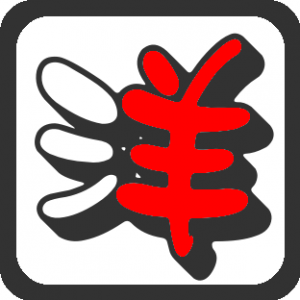Tag: chinese
How to start learning kanji and/or hanzi using Heisig’s method ~ Traducciones Inglesk
http://traducciones.inglesk.com/2015/05/learn-kanji-hanzi.html?m=1
Heisig’s method focuses only on you learning the writing and rough meaning of each character. While it may seem that not working on the Japanese/Chinese readings renders Heisig’s method incomplete or even useless to some people, the method focuses exclusively on the recognition and writing of the kanji/hanzi for a very specific and important reason.
In a nutshell, through Heisig’s method you gain the same advantage that a Chinese person would have for learning Japanese from scratch, or viceversa:
People from China/Japan are already familiar with most kanji/hanzi characters, and relate each one of them to a certain concept in their own language.
Thus, already knowing how each kanji/hanzi looks like, and what they mean, they only need to learn how to read them in the other language they want to learn.
Chinese Pinyin: Learn Chinese Hanyu Pinyin, Free Pinyin Pronunciation
Phonetic components, part 1: The key to 80% of all Chinese characters | Hacking Chinese
80% of all Chinese characters are made up of one semantic component (meaning) and one phonetic component (pronunciation). The sheer number of characters formed this way means that these characters ought to be taught properly, yet I think this topic is largely glossed over. This is the first article of two dealing with phonetic components and how they can help you learn Chinese better.
Source: Phonetic components, part 1: The key to 80% of all Chinese characters | Hacking Chinese
Japanese Tutorial 4: The revised Japanese Model Deck – Fluent Forever
Flashcard structure ideas for learning logographic languages.
Source: Japanese Tutorial 4: The revised Japanese Model Deck – Fluent Forever
A language learner’s guide to wuxia novels | Hacking Chinese
http://www.hackingchinese.com/a-language-learners-guide-to-wuxia-novels/
This was originally published in a newspaper, and Wang Dulu wrote it so that new readers could jump into the story without reading the first few chapters. How does he do this? About once ever chapter or two, there is a brief recap, which usually goes like this:
Character A: What is going on?
Character B: It all started when… [recap]
This is excellent for Chinese learners. If there is something the reader didn’t quite understand, and it’s important, it will get mentioned in a recap.
Reading Wuxia and Xianxia – Speculative Fiction in Translation
http://www.sfintranslation.com/?page_id=3659
Interested in learning more about popular Chinese fantasy in translation? Below are definitions and resources to get you started reading wuxia and xianxia.
Includes a translation site and a resource list for language learners.
